While hosting your own webinar or workshop can be a very valuable tool for your business, it can also be overwhelming. So, in order to help make that process a little easier, the CarolRoth.com contributor network of impressive entrepreneurs and experts have shared their top tips for running an effective webinar or workshop. Their answers are presented below in no particular order.
You may notice some similar insights, but I kept the concepts separate, as something in the way one is framed may resonate differently with you.

1. Keep 'Em Laughing!
There's a reason we still remember the "Where's the Beef" commercial all of these years later - it made us laugh. Your workshop or webinar needs to do the same. People learn and retain more easily when they are less stressed. Humor is the common denominator that cuts through the boredom, maximizes their attention and heightens recall. Do it through surprising images and headlines (if you're using PowerPoint) and wacky, obscure Dennis Miller-like metaphors that make people think!
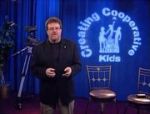
2. Engaging Your Entire Audience
When incorporating exercises in a workshop/webinar, be sure to construct them so that both your live audience and the audience watching from home or office can participate. You may need to construct each of them differently. After providing instructions to your live audience, next address the camera to give your web audience separate instructions if necessary.

3. Make it Fun!
Seminars and workshops today are expensive. For someone to invest their hard earned money to sit with you for 1-3 days requires an experience they will remember. Make your sessions interactive, experiential and...fun! Participants will remember you and your message.

4. Give Personable Reinforcement!
My ONE best tip for running an effective webinar or workshop is to be as personable as possible, keeping in mind that it is a given that you are professional and prepared. There is nothing more of a turn off than listening to a webinar or workshop and you feel that the ONLY reason why you were invited is because the experts want your money. However, by being genuinely personable, it sends a positive message that what you are doing goes far beyond just getting a SALE, but rather, it is a life investment.

5. Content is King
Effective webinars and/or workshops need to be content rich, creating value for the participants such that they can take what they learn and make a difference in their lives, both professionally and personally.

6. KISS
Keep it Short and Simple. Your topic can essentially sound like a foreign language to your audience. Speak slowly. Be visual either with your actual presentation (powerpoint, download/hand-outs, props, white board illustrations) or with your WORDS. Use illustrations and stories that your audience can relate to (you want to see that "ah ha!" look in their eyes!). Stick to 3 to 5 main points and go back and review those main points at the end.

7. Workshops Mean Working
Workshops should have participants work on solving case study problems, should guide participants in practicing specific skills improvement, should offer take away guidelines regarding principles learned for future reference, and include extensive Q & A sessions.

8. "Adults" Are "Children"!
It is a fact that the attention span of the adult is very little different than the attention span of children! After 10 minutes (sometimes five), the mind starts to wander. Therefore:
1. Let people know how long your webinar is going to be and keep it under 30 minutes max.
2. Keep participants ACTIVE throughout the entire presentation by engaging them in discussion that allows them to share ideas and expertise.
3. Include color exhibits. Color stimulates thinking.

9. Deliver Takeaway Value
I want my audiences to leave with value they can apply right away. I create short group activities where they can apply what they are learning right away. I walk them through creating a brand or a press release for their business. I also give them a hand out with partially filled out notes so that they have to listen actively to fill in the missing keyword. When they leave, they have a very clear set of notes and something useful to apply to their business. It's about delivering value.
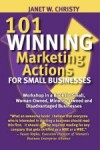
10. No Response - Dead Audience
Measure the responses of the audience to be sure they are understanding and benefiting from the material you are presenting. If they get lost or don't see relevance to them, then you won't have an opportunity for additional business or repeat participants. If the workshop is in person, watch the body language. If you do a webinar, incorporate a way for the audience to participate -- ask questions, provide input, and let you know that they are "getting it".
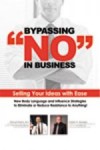
11. Simple and Involved
Always involve the participants; use the 2:1 rule: you have two ears, one mouth, so use them in the same ratio. On Webinars, use polls, questions, simple graphics or one picture rather than lots of lists and bullet points. Engage the participants online in creative ways through chat or even open lines. I've coached participants during Webinars and it works! When doing slides, use highlighter markers for added action that keeps people engaged.
In workshops, always have an activity to engage!

12. Start it Off Like a Rock Star
When the attendees enter the workshop...WOW them with the entrance. Be at the door greeting them and handing out toy clappers, bubbles, or noise makers they’ll use during the workshop. Have someone else introduce you and ask for applause, and then you enter the room or go to the front of the room with a lot of energy and smiles. Have everyone use clappers or bubbles to get things off with high energy and everything you say after that will seem more interesting.

13. It's Never About You!
The most successful webinars will remember that the participants' time and attention are the most important components. Make certain to keep them in mind when planning your agenda and comments. Keep introductions and sales pitches short and to the point. Make sure you provide valuable content that will keep your audience interested and attentive. Make their interests your priority and you'll be rewarded with a grateful and responsive audience!

14. Make Them Do What You Want
When we do a Webinar or Teleseminar, we get our attendees to Move, Clap, Repeat Phrases, and Stand Up, just like if they were attending a regular event. "Motion Equals Emotion." If you want to double or triple your audience's enjoyment, engagement, and closing ratio, get them moving.

15. Effective Webinar or Seminar
When having a collaborative seminar (the topic does not have to be art related), I have found having butcher paper, colored pens and even other art materials available at each table helps with the creative process. Creative ideas can come from anyone at any time, even from people not directly involved in the seminar problem/solution process. I have seen some amazing thoughts come out of this process during a seminar.

16. It's About the Audience
So many times, I've listened to webinars or watched presentations and it's been death by powerpoint! Remember your audience. I know there are points we all need to make, but don't turn them into boring lectures or the audience will be off! If not physically checked out, they will be mentally. Also, ask for feedback so you get better with each presentation and workshop you put on.

17. Balance You and Them
Make sure that in every workshop or webinar, you achieve the critical balance between an authentic, personal sharing of stories that illustrate your points, along with concrete tips, solutions and strategies that will move your audience forward. Too much personal info – you come across narcissistic and self-focused. Too little personal connection - you're bland, detached, and boring. Your audience longs to be informed, empowered and entertained. Strike a balance!
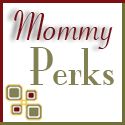
18. Inject Humor, Please
I've run numerous webinars in the past and found that as long as we kept things funny here and there, our audience stuck around. As soon as things began to turn hum-drum and long winded, people dropped off. Great information + a little funny = a winning combination.
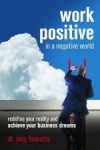
19. It's About Them
Your webinar is presented by you, but is not about you. It's about them-the people investing time, energy, & money in the learning. You are the bridge builder, spanning the gap between what they know & what they want to know. Start where they are. Drill your pillars/points with stories that they catch quickly. Pave the path with information that starts with the familiar, makes them think about the unfamiliar, & begin to accept it. Resist the urge to assume you are "them" & watch wisdom grow!

20. Top of Mind
The goal is to have participants obtain two clear ideas: 1) Something of value they learned and that is concise enough to easily share with others; 2) Call to action to continue their relationship with you -- for example, signing up for a free ezine or for a follow-up paid webinar. While it may appear in a webinar that these two ideas would obviously be covered, they often are not unless the presenter plans ahead to deliver these in a clearly understandable format.

21. Making Seminars Shine
Make them interactive. People need to feel that they are part of something - really involved.
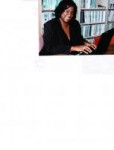
22. SEEING is Believing!
My most successful webinars and workshops have come from those where we offered visual and audio aids. The offering of Powerpoint presentations and the availability of audio presence for those who required mobility increased our audience participation and awareness. We found that these two key pieces moved us from having a few participants to hundreds of participants. Replay availability is also the finishing touch to continued support for your events.
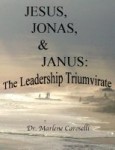
23. Workshops that Work
Want your workshops to work? Then you have to make participants work! Straight lecturing leads straight to soporific responses in attendees. So, stop talking and start walking around to help them with activities. The best rule-of-thumb is for the workshop leader to provide ten-minute doses of knowledge. These mini-lectures are then followed by activities to help participants inculcate what they've just learned.

24. Provide Handouts
Yes, handouts. Especially when teaching an online class, but for all workshops it is important to provide handouts for your attendees. We all learn differently. Some of us are auditory, some visual and others tactile. As a successful trainer, you need to include information for all learning styles. By providing a handout, you not only provide a take-away from the training, but you can significantly increase the learning (retention) of your attendees.

25. Go Spastic Before the Fact
I am a ditsy detail person. It's a standing joke that before any workshop, seminar or webinar, I go nuts about dotting the eyes and crossing the Ts... Everything is on lists and everything I can think of needing has been put in boxes weeks before the event. Because once Murphy's Law goes into effect at the workshop, it's a bad time to discover that you left the microphones at the office.

26. The BIG EASY
BIG and EASY
1. Visual aids should have only 5 (tops) BIG font lines of writing per slide (PP).
2. Introduce only 3 major ideas an hour; your job is to make learning EASY.
3. At the end of each segment, have each person write down the 3 best things that they learned.
Use BIG fonts, easy chunks of learning, and self-reporting on what worked.

27. Give the Gift of Content
The best way to run a successful webinar or workshop is to offer valuable content. Avoid generalities! Personalize your presentation as much as possible, offer related content, be interactive and give action items to attendees. Offering a useful "takeaway" like a checklist, will make the entire experience memorable and will bring them back for more.

28. Stretch Break!
When I'm running a longer webinar (over 45 minutes), I like to give people a "stretch break" in the middle. It wakes them up, reinvigorates me and refreshes them for the second half. I have a slide with a picture of my dog stretching that I use, so it's memorable and interesting, too.

29. It's Not About the Slides
Don't fall in love with your slides, handouts or script. It's great to be prepared, but remember that the workshop is about content and not materials. Be ready to answer challenging questions or to tell a spontaneous story to illustrate a point. You can always refocus back to the main ideas and themes, but a good presenter is flexible and responsive. Projectors break and computers jam, so you must KNOW your content inside and out. The visuals are just the dressing--your expertise is the substance.

30. Getting People Who've Register
Send multiple reminders to boost your attendance levels at a webinar. Many times, people will sign up, but then they don't attend. Did they forget or what? Sending multiple email reminders and calling pre-registered attendees will help boost attendance. Also, adding a link with "Add this to your calendar" will add a reminder to their calendar programs, warning them that the webinar is coming up.

31. Webinars or Workshops
People are multi-tasking all of the time now and that includes while watching a webinar or attending a workshop. Therefore, the same old, same old doesn't work anymore. Get people involved through groups in workshops where they report back or online through voting or asking questions. Make both dynamic, innovative, participative, and exciting or they will be distracted by the next shiny object. People are texting while they are in a workshop and doing something else while watching a webinar.

32. Stand Up and Be Heard
You be the show. Know your stuff cold and be able to interact spontaneously. DO NOT have to rely on AV. YOU be the show!!!

33. Frequent Engagement
When performing a webinar or workshop, the foremost consideration during your presentation is to include frequent and varied engagement opportunities for your participants. This can be done by using some online tools and in classroom applications that work well to keep your participants focused and participating. While online, try launching a poll or surveys frequently or ask chat questions. In workshops, use team exercises and active role playing to make greater connections to the material.

34. "Hands On"
What I've Found to be successful when running an Osteopathic Manipulation Seminar can be applied to any skill set you want to teach. Allow the attendees to participate in a "hands on" way. Engage the participants in multiple ways through touch, listening and speaking. Accomplish active learning and immediate practice of what has been demonstrated. Break down your presentation to several key points. Intersperse your seminar with multiple breakout sessions to practice each technique.

35. A Better Way to Engage
A better way to engage in a workshop or a webinar to maximize effectiveness is to interact with your attendees, because they are potential clients.

36. Teach the "How to"
Know the needs of your target audience. I help small businesses improve their bottom lines. I promote my seminars as "Best Business Practices to Improve the Bottom Line". I teach not only the "what" they need to be doing, but the "how to" as well. Knowing what to do is nice, but knowing how to do it is priceless.

37. Be Interactive and Engaging
How many webinars have I sat in on where the person drones on for 55 minutes and then wants to answer questions? By that time, I am either fast asleep, have signed off, or don't care.
The trick to being an effective presenter is the ability to be interactive and engaging. Monitor the questions and answer them as they appear. Be flexible with your subject matter and keep your slides to a minimum. Find out what motivates your audience with a pre-webinar survey and adjust accordingly.

38. Live Interaction!
Ask attendees for feedback and for their answers to questions during the webinar. Ask them to email their responses to an email address (one set up for this purpose).
As the answers come in, read them back to the audience and comment on them. It's a FANTASTIC way to get high-level interaction and engagement. Encouraging the interaction makes the event much more meaningful over the typical narration-style webinar.

39. I Could Find it on a Blog
I have suffered through many webinars whose content has been published on numerous blogs. I end up shutting it off after 5 minutes and just reading the content at my convenience. Give them something they aren't going to find anywhere else. Rather than just rehashing what's already out there, set yourself apart. It is much more of a challenge to keep an audience captivated when the presentation is online.

40. Are Your Attendees in the Loo?
When scheduling a webinar, remember that you will encounter a new set of challenges as host. A survey by LearningWare Inc showed that attendees' minds and bodies may be elsewhere during webinars.
The survey confirmed that:
35% of attendees had gone to the bathroom during a webinar.
81% of attendees check email during webinars.
With the lack of a face-to-face connection, keeping the attention of your audience just may prove to be more difficult than during a traditional meeting.

41. Knowledge is... Promotion
Suggestion: Don't spend any time promoting *yourself/your company* in a workshop - with the exception of a "where you can find me/us" at the beginning/end of the presentation/slideshow. Instead, spend the session giving the participants very useful, practical and unique information. Assuming your content is excellent, the workshop itself will be a showcase of your knowledge and there'll be no reason to do any hard (or even soft) selling.

42. Twice is Nice
Register yourself as a student, not just an instructor/presenter!
Enter the classroom early and make sure that everything is working: Can you see yourself on the video? How about the audio - is it garbled? How do your slides look? Send yourself a question from your student persona.
If you have time for a dry run the day before, great ... but you still need to test everything before you launch your webinar live.

43. Test First!
If your webinar involves video, you MUST test webcams and/or studio camera connections on the actual hardware and network to be used in the webinar at least one week in advance. This will give you time to correct problems that might arise in video connectivity.
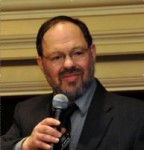
44. Get to Know Your Audience
Whenever possible, I try to walk around, meet people, find out a bit about them and why they came--and then refer back to one or two of them during my speech. You can do this in a webinar too, using the question tool or unmuting people.

45. Come From the Heart
When you genuinely come from the heart with the desire to be of service to your audience, they feel it energetically. They feel you care about them. When they feel that you care, they care more about what you have to say. If, however, you come from a place of professionally staging the event but lack the heart, the audience feels manipulated. Even if on an unconscious basis, this lack of connection will cause the audience to disengage because they feel the insincerity.

46. Send in the Clowns - Or Don't!
Workshops or webinars need to be real. If you're really a funny person, let your personality shine. If you're not funny, don't tell jokes. It will come off stiff, corny and BORING. Be friendly, upbeat and let your content pave the way for a workshop or webinar that people will enjoy and remember. Workshops are great ways to find new business, but you won't sign a single client if you don't present well. Be yourself. Be real. And of course, make your content compelling to your audience.

47. Fill Your Webinars Fast!
Create urgency for your fee based webinar registration by sending an email to your subscriber list. Alert your subscribers of the free or reduced webinar admission for the first 3 people that respond to the email. Many people may respond to the offer. You may offer a lesser discount or a coupon to future webinars to people who responded, but didn’t meet the deadline. Create additional income by recording your webinars to sell in the future.

48. Winning Webinar Recipe
Your webinar should have only your best actionable tactics, and it should not have a sales pitch of any kind. If your webinar content is that good, your pitch should come afterwards and separately.
Show your webinar attendees that you can deliver pure value. Follow that up with a one-on-one call in which you uncover their pain. If your service can deliver value that far exceeds your fee, then make an offer.
The Winning Webinar Recipe is a pitch-free webinar!

49. Today
Focused on improving attendance? Send a short ‘Our Webinar Is Today’ email reminder that includes the highlights at least 6 hours in advance of the start time.
It may seem simple, but in our fast paced world, a timely email reminder can capture even the busiest audience members.

50. It's All About the Details
The number one thing to remember about running events is all about your integrity and doing what you say you will do when you say you will do it. If you commit to opening the doors at 8am, then do it. If you give your attendees a schedule, try to follow it as closely as you can and if you can't, then talk about it with the group. Your integrity is on the line here and if your attendees can trust you for the little things, then they know they can do the same for the big stuff. It's about respect!
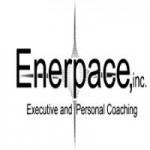
51. Get 'Em Engaged B4 You Start!
It's critically important to know your audience. However, it's equally important to get and keep them engaged. Sending out a few short survey questions in advance can help you tailor your material to what the audience cares about most. It can also start a great dialogue and relationship with a few folks so you have someone to interact with and reference during the actual seminar.

52. I Failed Fabulously!
Expect failure. Expect that something is going to go wrong- technical issues, web issues, or sound issues. If you are giving a presentation, make sure that you have your backup and a back up to your backup. Do not rely on slides or notes to carry you through. Make sure that you know your material, so if everything fails, you still have your own knowledge of the subject. Ultimately, people are there to hear you, not your fancy presentation, so when all else fails, you always have you!

53. Reach, Don't Preach!
Do not underestimate how much your audience knows - giving them a chance to contribute is a lot more engaging than telling them what they already know.

54. Give Away Tips NOT Promotions!
Webinars and Workshops can be free or fee, but regardless of the price for admission, they have to be action packed, not slammed with upselling and promotions.
Every webinar or workshop should include Tips, Lessons Learned, Best Practices and even worksheets or other tools that the participant can use today for their business or life.
Give and you will receive!

55. Marketing With a Calendar
You'll gain more attendees (and ezine subscribers) when you create a Marketing Calendar for your business. In it, you'd list (among other marketing efforts for the year) all of the webinars you plan for the next year. You'll put this same information on your website and on any marketing materials you publish. When you speak, provide the website for your speaking calendar. Your events can also be added to Facebook and LinkedIn and a variety of webinar marketing websites, too.
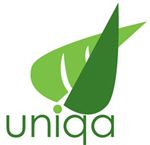
56. War on Words
Did I walk into a writing class instead of a workshop? Why am I seeing slides of endless words, with a presenter monotonously reading them? Interaction is the key for a successful workshop - so connect with your audience, ask them questions, and engage them. Make it lively - use pictures whenever possible. Don't make it academic - use real life examples and ask for examples from your audience. Lighten up - a couple of funny anecdotes will break the ice, contributing to the success of your workshop.
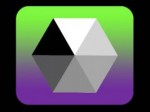
57. Mistake? Own it.
If you make a mistake, OWN it. Mistakes are inevitable. Maybe you forgot an idea. Software malfunctions. You made a Freudian slip. The slide text says "pubic area" not "public area." You use an offensive ethnic reference. You mis-identify the CEO. Ouch. But don’t ignore it. Embrace your foible. Openly acknowledge the learning moment. Don't point fingers – it’s your responsibility, your stage. Owning your mistake makes you look more engaged, not less. The audience will like you better for it.

58. Calm Your Workshop Nerves
Your feelings of nervousness can affect the effectiveness of your workshop. Leave all of your issues outside the workshop room door. The workshop is NOT about you, it is about each and every person in your audience. So, instead of focusing on how nervous you are feeling and exacerbating those feelings, tell yourself that the workshop is not about you and focus on the needs of your audience.
Your workshop is about your audience. Remember, when you feel nervous, focus on the needs of your audience.
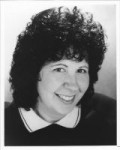
59. Workshop and Webinar Tips
It depends on the length and purpose of the workshop, as these would govern the type of session. You may only need an hour, but two hours can cover more. Be focused. List what you want to say and then expand on it using examples. If you are giving a workshop on customer service issues, you might want to talk about what constitutes quality service, customer concerns, give examples of those, let the discussions begin, and allow people to pose questions for clarification.

60. Add Value!!
After practicing loan modifications and foreclosure defense for the past two years, I am realizing that people don't want to be sold on a bunch of products and services. They want knowledge and information. They want to know that this company knows its stuff and that they can be trusted. Webinars are a great way to do that, but only if you add value to the potential client's life. Give valuable, insider information that they can't find anywhere else and they won't go anywhere else!

61. Lead with an A-ha Moment
I always throw out a difficult scenario to the audience right away. (What would you say to a customer whose car you just towed away? Or to an employee who just screamed at a customer?) Next - even with hundreds of people - I have them discuss what they would do with the people around them. Then, I go around with my mike (or chat screen), have fun with people's answers, and then give them *my* answer. And then, they are hooked.

62. Stand Out!
Don't market it like another webinar... Make it sound fun and exciting by hosting a virtual cocktail party or virtual luncheon. People are getting tired of the same ol' same ol' that everyone is doing. You must stand out in your market!

63. Content is King
There are only so many ways to "dress up a pig." With webinars, there is one thing to remember: Content is king. The most basic elements for any successful webinar program are good content delivered by good presenters. All of the bells and whistles in the world will not bring people back or keep them logged in if the content isn't educational, useful and relevant.
Do you know another webinar/workshop tip that wasn’t included? If you do, please share it below. And as always, many thanks to everyone that contributed to this article!
































































